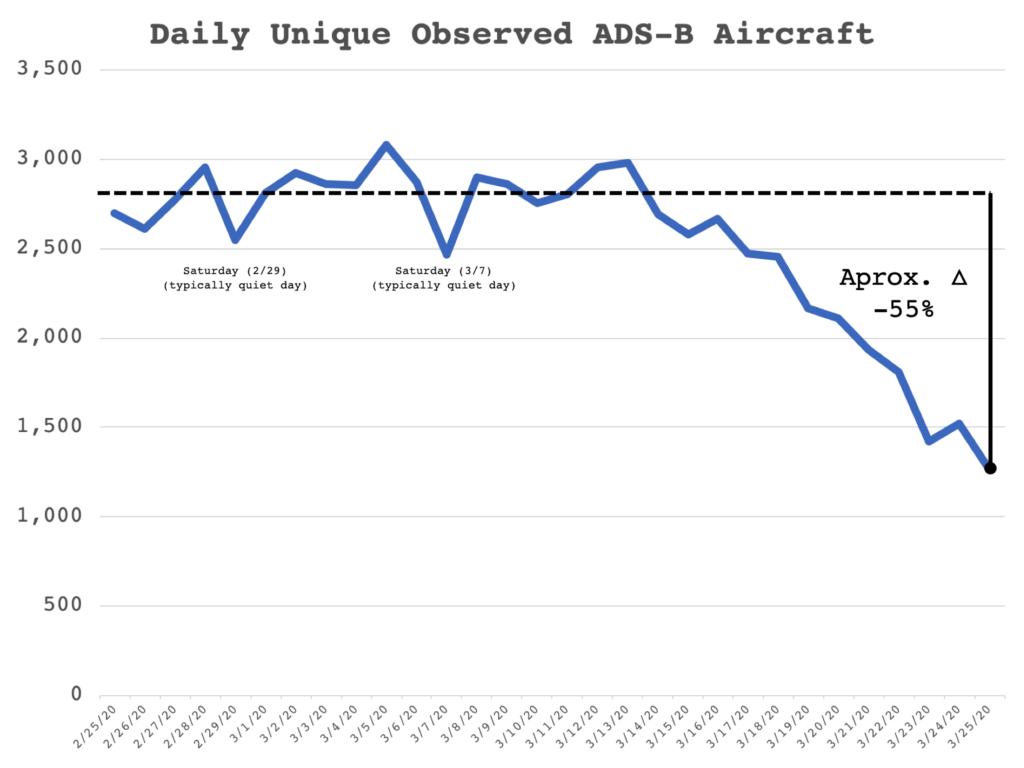Pulling COVID-19 Impact Data Out of Thin Air
2 min read
 As a data scientist and pilot I love data and aviation, and thus I really love any opportunity to combine the two.
As a data scientist and pilot I love data and aviation, and thus I really love any opportunity to combine the two.
Sometimes it’s easy to forget that data is literally flying around in the air all around us. Occasionally I like to go poking around the radio spectrum to see what I can find. Under the present circumstances, I certainly don’t take any pleasure in sharing the latest such hobby insight but it’s worth seeing regardless.
Automatic Dependent Surveillance-Broadcast (ADS-B) is a technology that allows aircraft to communicate their position to air-traffic control and other aircraft based via self-reported 3D-GPS position data. Depending on the equipment used, signals are transmitted on either 978 MHz or 1080 MHz. As of January 1, 2020 aircraft passing through busier airspace in the United States are required to have an ADS-B transponder.
For several years now I’ve kept an ADS-B antenna in our house linked to a Raspberry Pi to record the data contained within these broadcast packets. Some more information on the data contained within these communications can be found here.
There’s lots of interesting analysis that can be done with such data, but for the purposes of this post I’m only focusing on unique aircraft identified. My receiver is located just north of New York City and on a typical winter day picks up signal from 2,500-3,000 unique aircraft (summer can be much higher with more recreational and island-hopper flights zooming around). Starting around mid-March the data started showing a clear decline in the volume of daily traffic and as of today air traffic as seen by my attic antenna is down ~55%.
I have many friends in and around the aviation industry and I know what this means for them and the proxy representations of broader economic impact for all. We will get through this. During these difficult times we all thank the healthcare teams, first-responders, public officials and others working to address the current situation—and everyone else doing their part to flatten-the-curve.
Dr. Hartman (LinkedIn) is the Chief Innovation Officer for CKM Analytix.

